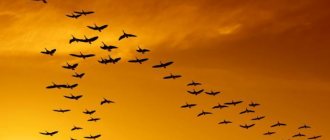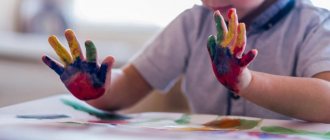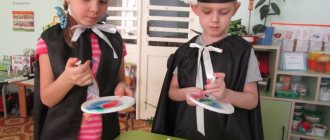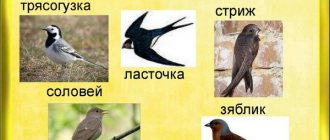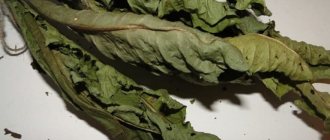First, you need to answer the question for yourself: is a small child really ready to learn to dance? Most children respond to the sound of music with joy and enthusiasm. Moving to music is a great way to develop children's understanding of dance and their understanding of music.
Although your child may seem ready to learn, most dance schools require children to be at least three years old. Classes for children aged three to five years, dance classes are usually called "creative movement" or "preparatory" classes. Many schools offer mommy and me dance classes, giving parents the opportunity to attend classes with their children.
If parents want to introduce their child to music and dance, they should not hesitate to sign up for professional classes. With a little imagination and creativity, you can create a fun and stimulating dance lesson from the comfort of your own living room. The following ideas will help your child develop fine and gross motor skills as he or she balances, jumps and moves. It's worth playing some fun music and showing your child some simple dance terminology with basic foot, arm and body positions.
Exercises for kids
Stretching
Most babies are amazingly flexible. Since flexibility decreases with age, teaching your child to stretch their body at an early age can encourage them to remain flexible in the future.
Simple stretches for kids:
- touching your toes: you need to show how to sit on the floor and reach for your toes (without bending your knees); - leg extension: you need to show the baby how to lie on one side and keep one leg in the air (without bending your knees and stretching your “toes”); - spreading the legs: ask the baby to sit on the floor with his legs spread in the legs apart position (there is no need to force the achievement of a perfect split).
Baby skipping and jumping
Kids love challenges. Since jumping and skipping are skills to master, your child will surely enjoy trying to get their feet off the floor.
Creative ideas for jumping:
- friendly frogs: you need to tell the child to pretend to be a frog and jump around the room on all fours; - babies: let your child pretend that he is a kangaroo, while you need to demonstrate to him how to jump off the floor with both feet; - popcorn: let the child imagine that he is a grain of popcorn that is about to burst inside the microwave. You need to count to three together and then start jumping around like freshly baked corn kernels.
Learning to March
If your baby likes to stomp his feet, you need to show him how to walk like a soldier. Marching is one of the early skills taught in a beginner's lesson. Let your child focus on lifting his legs as high as possible.
Learning to reach out
By raising your child's arms high, you can teach him to stretch and “lengthen” his body. He should be encouraged to keep his hands like this for as long as possible.
Creative examples of exercises:
Trees in the wind: You can tell your child to imitate a tree swaying in the wind by showing him how to raise his arms high above his head and sway back and forth. Flower garden: Let the child pretend that he is a flower that should grow and bloom in the garden. When the sun rises, its petals open and its stem reaches towards the sky. Let your hands be leaves, rising high and reaching towards the sky.
Methodological development on the topic: “Games and play exercises for developing the artistry of preschool children in choreography classes”
Abstract This methodological development is devoted to the problem of developing the artistry of preschool children in choreography lessons. The work reveals practical ways to solve this problem by presenting various methods and techniques successfully used by the teacher in practice, and is of an applied nature. The development may be useful for additional education teachers working in choreographic, sports, theater, vocal and applied associations to work with preschool students.
Introduction Artistry is high creative skill, artistry (according to Efremova’s dictionary). Artistry in children's choreography is the ability to express emotions, image and proposed circumstances in a dance number according to its plot, using facial expressions, pantomime, gestures and voice. After all, dance is a small performance and it is performed by small artists. Remembering the sequence of all movements, combinations and permutations is a big task for a child of any age.
And it often happens that, diligently trying to perform this entire sequence, the child, concentrating, dances the entire number with a serious expression on his face, as if solving a mathematical problem. And the face must work, must be in harmony with the movements. Therefore, one of the tasks of a choreographer teacher is to develop children’s artistry, which determines the relevance of this development. To solve this problem, there are a lot of games and exercises for any age that can be used during any lesson as a cool-down or relaxation.
These games and exercises are versatile and solve many additional problems, such as developing imagination, relieving emotional and physical stress, removing tension and liberation, stabilizing breathing, uniting the children's team, and giving emotional charge and confidence.
The novelty of the development is determined by the fact that there are not many teaching aids devoted to this topic, and even fewer of them are of an applied nature. In solving this problem, we have to turn to works devoted to theatrical activities, musical, rhythmic and physical education, as well as to the experience of colleagues.
The purpose of this program is to present to teachers ways to solve the problem of developing the artistry of preschool children in choreography classes, by presenting practical methods and techniques.
This development outlines games and exercises for preschool children and presents them using them during the lesson. Many of them are situational in nature and were born in improvisation. After all, the level of psychological state and needs of children can make adjustments to the course of the lesson. In order for the lesson to proceed with the achievement of primary objectives, sometimes you have to improvise. In such joint creativity, interesting solutions are born. The use of the presented games and exercises involves variability in accordance with the goals and objectives of the lesson, and can be used situationally.
The teacher’s task at this age is to preserve the childlike spontaneity that so touches the audience, and to develop facial expressiveness. The best way for this is play, because play at this age stage is the main activity of children. In addition, they are just beginning their acquaintance with choreography, so the entire lesson is built through a game, using chants and spells, images and transformations, finger and breathing games, creative tasks, as well as attention games.
The presented material is used within the framework of the choreography program “Rhythm and Dance”. There are no special conditions for the application and labor intensity of using the development.
1.Principles of organizing games and game exercises
The proposed technology implements an activity approach, during which the main stages and logic of any activity are provided: motivation for the game, determining the goal of the game, achieving the game goal and awareness of the results. I would also like to display some didactic principles that are especially important for organizing gaming and creative exploration activities with preschool children. 1. The principle of psychological comfort. This is, first of all, creating conditions in which children feel “at home”, orienting children towards success and, most importantly, a feeling of joy, enjoying the activity itself. 2. The principle of creativity. This principle presupposes a focus on creativity, the acquisition by children of their own experience of creative activity. 3. The principle of a holistic view of the world. Here we are talking about the child’s personal attitude towards the acquired knowledge, as well as the ability to apply it in their practical activities. 4. The principle of variability presupposes the development of variable thinking in children, that is, an understanding of the possibility of different options for solving a problem. This principle develops the creative thinking of children, but also of the teacher, helping him to find many different options for implementing content in working with children. 5. The minimax principle makes it possible to take into account the individual characteristics of children and ensure that they move forward at their own pace.
2. Methodological recommendations, games and play exercises using during the lesson Working with preschool children implies a vivid emotional display, lively, participatory communication with children, situational nature of the lesson, joint creativity, the use of interesting musical material accessible in style and character for children to perceive .
2.1. Positioning the body 6th position – “This is a box with a secret for mom, you can’t show the secret to anyone!” 1st position - “This is a box with a gift for mom, open the box wide so that mom can see our beautiful gift” or on the inside of the foot it is written on each leg: “I’m great!” And we say to the kids: “Open your legs wide so that everyone can read and know how great you are!” Hood - the right hand is a crane, we voice it with similar sounds, and we say to the children: “The crane took us by the top of our heads, grabbed us by the hair and pulled high so that the children became tall and beautiful”;
“Let’s imagine that our head is a balloon, and now we suck helium into the balloon, this is such a light gas that lifts our balloon to the ceiling. Oh, we'll fly away now! Rather, we take dumbbells in each hand and hold them tightly”; - “We take the pink elephant and sit it on the right shoulder. Now we take the lilac elephant and sit it on our left shoulder. Some elephants are heavy, you can’t lift your shoulders” (to fix the shoulders); — “Imagine, guys, that the ceiling is a huge magnet. And we are metal toys, we are attracted so strongly to the ceiling that we are about to fly away. Let’s turn off the magnet as soon as possible, we’re all already up nicely”; - “How many beautiful mushrooms have appeared in the forest, and they argue about who is the most beautiful of all. The funniest mushroom suggested: “Here comes the mushroom picker, whoever is more beautiful will take to him.” The steel mushrooms are stretching with all their might to show off all their beauty.” The teacher acts as a mushroom picker, you can praise the mushrooms, or you can collect one after another in a basket and walk like a snake and teach drawings; - having learned how to sit up, we offer the children the image of princesses and princes: “Let’s greet each other, like princes and princesses greet each other at the ball.” It is important to immerse the children in the image, describing what beautiful outfits the princesses have, swords and hats for the princes; - we use the image of icicles with the words: “Today I walked, walked, walked and found an icicle, not like that, not like that, but a long, big one!” When the guys say “not like that,” they show the size of the icicle, 10 cm, 50 cm, and when they say “a long, big one,” they lower their arms from the armpits down and stretch out; - later you can play with opposite images, emphasizing that the guys are dancers and should stand as the most suitable character or object, for example: giraffes and hippos, cucumbers and tomatoes, icicles and snowdrifts, arrows and watches, rockets and helicopters, fixies and smeshariki etc. Hands on the belt - “We put mittens on the hands, four fingers live together, but the fifth is not friends with them” - we show the offended face with the kids and put the hands on the belt; - with our hands we pretend to be snakes hissing at each other, we ourselves hiss and get angry: “The snakes quarreled, they had a fight, and then how can they grab us by the tummy.” We put our hands on the belt.
Hands “on the skirt” - “Imagine how a droplet rolls from your shoulder, it should roll off your finger and fall.” We run our finger along the hand, as if a droplet is rolling, the emphasis is that it should not stop anywhere.
We keep our feet together and our fingers together - we pretend to pour flour with our hands, then add an egg, mix with a mixer, and show glue on our palms. The teacher, testing the glue for stickiness with his finger, pretends that it is glued and with difficulty pulls his finger away. “Now we smear the legs, press them together so that they stick together better, smear the fingers and glue them together (except for the big one), smear the palms and glue them to the belt.” Afterwards, the teacher checks the children’s work, rocking them to the sides, pulling them by the legs and arms, praising and scolding them;
- we sew the legs together, depicting the whole process, how they took a needle, inserted a thread, tied a knot, sewed both legs from the socks to the groin, bit off the thread, stuck the needle into the needle bed. To check the result, children jump without spreading their legs.
2.2.Bow This element of the lesson can also be played out as a greeting of princes and princesses, or it can be set to a children's musical composition and staged depending on it.
2.3. Warm-up “Chest forward, straight back, warm-up begins” - with these words we begin the warm-up. While pronouncing the speech, the children get to their starting position. Our warm-up is not simple, but with poses. Children stand in various poses that they themselves composed or according to instructions, and freeze, as if they were being photographed, at the beginning of a musical phrase, the poses are changed, and so on four times until the end of the musical square, then warming up continues.
After the warm-up, we check how well the guys have warmed up. The children raise their palm, preparing to touch their forehead, the teacher says: “Aren’t you afraid to check, we’ve warmed up so much, probably a hundred degrees!” And I'm afraid! Let’s count to three and touch our forehead,” together we count to three, touch our forehead with our hand and, squealing, pull it away as if we were burned, blow on the “injured” hand. Or we take a piece of imaginary ice, put it on our forehead and show how the piece has melted and water has started running, and we wipe ourselves off.
2.4.Jumping The jumping part of the lesson is just a treasure trove of different images! These are bunnies, and frogs, and kangaroos, and kittens, and balls, and rockets, and spies. And this is how you can play around transforming into a character. Make jam - collect the berries, add sugar, stir, grimace at how delicious it smells, put your hand in the pan and happily lick each finger one by one. We do the same with the second hand. We stroke our belly, making happy faces. Suddenly the tummy hurts, we touch our hands alternately to the tummy, shoulders, cheeks and then ears grow on the head or claws with a long tail appear. Together we say: “There were guys, now there were hares or kittens or kangaroos.”
To make juice (lemonade) - we stretch on our toes and collect fruits from the tree, put them under our heels and squat down - this is a juicer. We releve, thus squeezing out the juice. We take out a glass of juice from under our heels, show it to everyone, smell how delicious it smells, insert a straw and drink, pat ourselves on the tummy, the ending is the same as with the jam. Every time we talk with the children about what ingredients we choose for today’s lesson - this allows the children to use their existing knowledge and experience, and also activates their imagination, sometimes such fantastic recipes are obtained.
With new babies we are always bunnies. We jump to the music, as soon as the music stops, the bunnies hide in holes (they lie down in a ball on the rugs), a fox or a wolf or Baba Yaga comes to them with a gift and asks to open the door, the guys do not let anyone in, refusing gifts and say that they only eat carrots and cabbage. The last time the bunnies hide behind the door. We draw the door with colored pencils (fingers) and show how we are hiding behind the door - ears pressed, tail pressed, paws hidden, scared faces. And this time Yulia Evgenievna came to us, brought with her a whole bag of carrots and cabbage, hurry up, my friend. The guys run up to the teacher and take gifts, return to their seats and put both hands to their faces and say: “hum, crunch, crunch there’s only noise behind the ears.” The words of the teacher: “There are a lot of vitamins in vegetables, show how strong you have become and how tall you have become.” The guys show strength by bending their arms like strongmen and stretching out, showing how tall they are.
Another favorite jumping exercise for children is James Bond. In this exercise we shoot like spies, blow away smoke from pistols, look through binoculars, fly on a rocket to the soundtrack of the film of the same name. Perhaps this exercise is a favorite precisely because it allows the kids to play the role of a cool spy.
2.5. Games for coordination in space, knowledge of the sides right and left These games are used before practicing dance moves in columns, so it is important to repeat where the right side is and where the left side is, games for coordination in space are also appropriate, since the guys will have to change position and return to their seats.
The well-known game “Right and left build cities, right and left drive trains, right and left can sew and darn, right and left can clap loudly” is used in the following interpretation: the first time we repeat the words, the second time we growl the words like bears, At the same time, the movements are sweeping, the third time we squeak like mice and show movements with our fingers, as if they were mouse paws, and the last time, like fish, without uttering a word, just opening our mouth. At the same time, the teacher’s fish is very cunning and disrupts the sequence of movements, deliberately confusing the kids. The children’s task is to perform it correctly and not fall for the trick. The images here can be any with a characteristic execution of words and movements - a wolf, a fox, a robot, a soldier, etc.
Rain is a game of coordination in space. Children run around the hall on command. The teacher says: “It’s raining, it’s raining,” and the kids are returning home. How to walk in the rain, children list what they need to wear for a walk and pretend to put on boots, a jacket and take an umbrella. They run for a walk again, jumping in puddles. The teacher’s command: “Ugh, the snowstorm has risen,” the guys run to their seats and put on pants, felt boots, a warm jacket, a hat, scarf, mittens, and again go for a walk to make a snowman.
The words of the teacher: “Mom is calling home - “My sunshine, come home.” We take a mug of tea in our hands, and there is a lemon floating there, we catch it, we look at the light, how beautiful, yellow, delicious, perhaps let’s lick it” - the children “lick” the lemon and with their faces they show how sour it is, then they throw away a piece and wash it down with tea.
After the combinations, the older guys come up with jumps of their own composition and demonstrate the most interesting ones to each other, the group repeats. This exercise is good for activating motor imagination.
2.6. Columns At this stage of the lesson, various dance steps are practiced and learned. And to better understand the material, we turn to various images. Who can move like that? Of course, soldiers are marching, running with a rush is the running of a fox, running with knees raised high is the running of a horse, shallow running, hands holding a skirt is princesses running, walking on tiptoes on outstretched legs is herons walking through the swamp. By learning and reinforcing the steps, we develop an image, playing out what we look like, where we are, what we are doing here. From lesson to lesson, practicing the steps, we just need to name the image so that the children understand what is required of them and perform it correctly.
2.7. Games for the development of facial expressions, transformation, attention, finger games Facial expressions. Circus. Sitting on their knees, the guys cover their eyes with their palms - these are screens. The teacher says what kind of clown comes on stage, and the children imitate his facial expression. Sad, angry, cunning, surprised and cheerful clowns appear in turn.
Before the game, we warm up our facial muscles: we pull our cheeks, blow air kisses, do a clock exercise or a rocker exercise with our tongue, and puff out our cheeks one by one.
Smile . We smile widely, so that our teeth are visible, as if we are rejoicing at a gift. And now they were offended, their lips pouted, their eyebrows furrowed. So, we alternate a smile with pouting lips several times. To make the smile look natural, before the exercise you can make the children laugh by making a face or telling a joke. They will remember this feeling, and it will be easier for them to smile on purpose.
Reincarnation . Shaldy - Baldy. This magic spell is cast when the children sit in a circle and place their palms on their neighbor's knees. “Shalds Baldy lykotok - slap each other on the knees, Untsy bryntsy trakotok - salted the top of the head then the chin, Chekubriki, chebukriki septebryaki pupiriki - raise our hands and lower them twice, Tararam tararam buh babam" - gave the right hand to the neighbor on the right, then put the left one on the hand to the neighbor on the left and at the last words they knelt down and raised their hands up. After these words, magic happens, the children learn from the teacher who or what they have become, and in joint creativity they perform the image. You can turn on music for them as a hint, this will give them a flight of imagination and make them more interested. These could be icicles, a snowball, a dandelion, sea creatures, falling leaves, a mushroom meadow, bikers, butterflies, monkeys, frogs, snowflakes, trolls, a flock of birds and much more.
We won’t tell, but we will show, we will retell everything with our hands. After these words, on the instructions of the teacher, the children depict some kind of work (profession). The teacher selects the most accurate option and asks the child to perform it again in front of the group. Then he comments on its performance, explaining to the guys why this option is the most accurate. This exercise activates attention, thinking, logic and imagination.
Attention . Traffic light. Red children stand, yellow children clap, green children run in place. The teacher gives commands and performs this warm-up together with the children, then the game becomes more complicated. The teacher says one command and shows another, deliberately confusing the children. Whoever doesn't get caught is well done.
Nose, ceiling, floor. Similar game. On command, we point with a finger to the nose, to the ceiling, to the floor. By complicating the game, the teacher confuses the children. Fish. The teacher pretends to be holding an aquarium with one hand, and the other hand is a fish. As soon as the fish jumps out of the aquarium, the children must catch it by clapping their hands. The fish is very cunning and sometimes deceives the children as if it wants to jump out, the main thing is not to get caught.
Finger games. Finger games are also appropriate for developing artistry. Short poems can contain an image, describe some event or action, they can be characterized by various states: surprise, joy, kindness, fear, anger, which you need not only to show with your fingers, speak with your tongue, but also to display with your face.
Legs, legs, where have you been? (bend to our feet) - We went to the forest to pick mushrooms. (marching) - Did you guys help? (arms to the sides) - We were collecting mushrooms. (pretend) - And you, little eyes, helped? (point fingers at eyes) - We searched and looked, looked at all the stumps. (hand to the forehead, looking in different directions) We shared the orange (left hand in a fist, right hand clasping it) There are many of us, but he is one. This slice is for a hedgehog (with our right hand we open our fingers one by one) This slice is for a siskin. This slice is for kittens. This slice is for ducklings. This slice is for the beaver, and the peel is for the wolf. (shaking fingers) Run away in all directions! (we hide our hands behind our backs) The wolf is angry, trouble! (pretend to be an angry wolf)
We chop, chop the cabbage (chop with our palms) We rub, rub the carrots (fists rub together) We salt the cabbage, salt (salt with a pinch) We knead the cabbage, knead (we clench and unclench our fingers) The fish swam, swam (palms closed and moving like fish) in warm, clean water. Either they will clench (we clench our fists), they will unclench (we spread our fingers), or they will bury themselves in the sand (motor movement) Hamster-hamster hamster (puff out our cheeks like a hamster) Striped flank (we stroke ourselves on the sides) Hamster gets up early (stretch) Washes cheeks, eyes the hamster rubs (pretends to be) sweeping the hut (we bend over and pretend to sweep) and goes out to exercise. One, two, three, four, five Khomka wants to become strong (we show how strong he is). - Mom mom! - What, what, what? — The guests are coming. - So what. - Hello hello. - Smack, smack, smack. (Spread palms are closed, for each response the fingers tap each other, starting with the little fingers. When greeting, they hug each other and kiss)
I bake, bake, bake a pie for all the kids, and for my dear mommy I’ll bake two gingerbread cookies. Eat, eat, mommy, two sweet gingerbread cookies. And I’ll invite the kids and treat them to some pies! (movements are reproduced according to the text) Two bears were sitting on a thin branch (we depict bears and branches) One was reading a newspaper (we open our arms as if reading a newspaper) The other was grinding flour (we knock fist on fist) One - peek-a-boo, two - peek-a-boo , (hands to the sides in turn) Both plopped into the flour. (we lower our hands down) Nose in flour, tail in flour, (show the nose; show the place where the tail should be) Ear in sour milk (show the ear) Each time this game is played faster and faster. Pow-pow-spider sewed a web (connect the first finger of the left hand with the second finger of the right hand, then vice versa) Suddenly rain started dripping, washed away the cobwebs (we moved our hands as if we were splashing, rubbing our palms) So the sun came out and began to dry out (we swing our outstretched palms to the sides and rub) Pow-pow-spider is working again! (fingers weave the web again) When children master this game, you can complicate it by weaving a web with the first and third fingers, then the first and fourth, the first and fifth.
2.8. Gymnastics In gymnastics, images are also used to learn material, according to the same principle as in jumping. Having mastered a set of certain exercises, children perform gymnastics to music like a dance parterre sketch, using existing images that grow into small events or stories. Here the musical composition itself serves us as a great help. Among the exercises used are the plot of washing, traveling in a boat, sending an email, a story about kittens, a concert in a swamp, the image of a clock, bees, caterpillars, the sea, butterflies.
At the initial stage of learning the splits exercise, a story about trees is good. “There are dry, gnarled, scary trees standing in the clearing (the kids imitate trees). Why are they like this? That's right, they don't have enough water. Let us reach for our roots with all our might. Our roots are straight, no one bends their knees (pulls the twine). We reached the water, look how beautiful our branches became (they stood up, straightened up). We also reached for water, leaves appeared on the trees (we moved our fingers). Once again the apples stretched and ripened on the trees; it turns out that these were dried up apple trees. Let’s try an apple from each branch.” Children pretend to bite apples and what they taste like.
Finale of the lesson At the end of the lesson, I propose using outdoor games, mainly so that the children receive a positive emotional charge and leave the lesson in high spirits. These same games also have the function of developing artistry, using space, and developing imagination. 1,2,3 freeze or sea figure or freeze. Children move to the count and freeze to the command according to the instructions.
The topic of the assignment can be absolutely anything. You can freeze in any gymnastic exercise or in a dance pose to consolidate what you have learned, or you can also freeze in an image on a topic, where the teacher will guess who is depicted or what is depicted. You can freeze individually, or you can all freeze together in a common figure. Zamirashki can also be played with music. Movements to music can be in a given pattern, or they can be arbitrary. It is recommended to stop the music at the end of a musical phrase to develop auditory attention. Also, fading games are played in a knockout format, where, ultimately, there are one or two winners left.
Disco . This is a real children's disco game. The guys dance freely to the music, return to their seats on command, the girls hold their skirts, squat and squeal to the music, then the boys stomp their feet, wave their arms and shout “Eh.” These movements alternate with voluntary ones. At the end of the melody, everyone lines up and performs the final movement. Any dynamic children's song is suitable for this game; depending on the musical material, dance movements should be selected.
Hugs . Children dance to the music; as soon as the music stops, the teacher pronounces the number. Children need to hug in the amount specified by the teacher. Those who don't have enough guys leave the game. In the end there should be two winners. The winners are awarded with applause, after which everyone dances together and forms a bow.
Performing your own composition. Children happily perform their small dance pieces, using not only movements, but a certain image and even building a plot. As a rule, these are several sequential actions, but they are not yet complete. However, children get great pleasure from doing their own work. At the end of the lesson you can watch one or two sketches. Others interested in the next lesson.
Mirror . Children are divided into pairs, on the right is the child “mirror”; on the left is the child who will look in the mirror. Then those looking at them take any poses, and the “mirror” repeats them with maximum accuracy. On command, the children change. Actually, the principle of mirror reflection is used in every lesson, but it’s one thing to repeat after the teacher, and another to repeat after someone like you.
Conclusion Completely different children come to additional education to study choreography, with different abilities and inclinations. These children are brought in by completely different parents, each of whom has their own request for educational results.
Most mothers and fathers bring their child for general diversified development, realizing that choreography has many tools for this. Some parents take their child to classes on medical recommendations from a doctor, wanting to improve his health. Someone wants to see their child on stage. Many mothers themselves did choreography in childhood, and do not see a better activity for their daughters than dancing.
It is sometimes difficult for a teacher to realize all the tasks assigned to him. It is often not always possible to form groups according to children's abilities. Therefore, when developing physical, musical and artistic abilities, one must understand that they will develop differently for everyone. This is due to the state of the nervous system and the general physical condition of the child.
Children who are more capable can participate in competitions and concerts at various levels. Children who are less choreographically gifted will be happy to show themselves at an open lesson for parents. After all, each of them certainly develops and grows, and we have something to show our parents!
Results of the work: 1. The joy of games gives children a feeling of comfort, emotional charge and positive associations with activities. 2. Relaxation of facial muscles. Such clamps as pursing and biting lips, sticking out the tongue are removed. 3.Use of masks. Master a set of basic facial expressions and can use them as assigned. 4.Smile. Actually, its presence is already a great result. Smiling voluntarily for some time is an even greater achievement. 5.Liberation of movements. Children move voluntarily easier and more freely, know how to freeze, easily choose poses, orient themselves and use space. 6.Enriched imagination and more developed attention.
methodological development
Author: Serdyuk Yulia Evgenievna Additional education teacher in Irkutsk “CHILDREN’S CREATIVITY HOUSE No. 3”
The material is posted on the website as part of the “PUBLICATIONS” project
Sincerely, Natalya Dovbysh project manager choreograf.com
Dance positions for kids
It's never too early to start learning the five basic dance positions. Your baby may be able to put his feet in first and second position, but don't expect too much just yet. Small legs are difficult to position “right.”
You can take a small chair for the child to make it easier for him. It’s worth starting from the first position: putting the child’s heels together and turning his toes to the sides. After this, you need to see how long the baby can hold this position. As he grows up and learns to control his legs better, you can move on to other positions. Pretty soon he'll learn all five.
Plie for babies
Most likely, the baby will be able to bend and straighten his knees. In dancing, bending the knees is called plie. To begin with, let the child bend only halfway to the floor, then you can show him a real plie.
Ballroom dancing for children
Children aged 5-6 years can already start dancing with serious intentions. Most professional figure skaters and dancers admit in interviews that the beginning of their careers was the ballroom dancing section, where they entered at a very young age. Do not forget that not all children are interested in such activity and practicing ballroom dancing “underhandedly” can become not only stressful, but also the cause of many complexes that will appear later, in adulthood.
